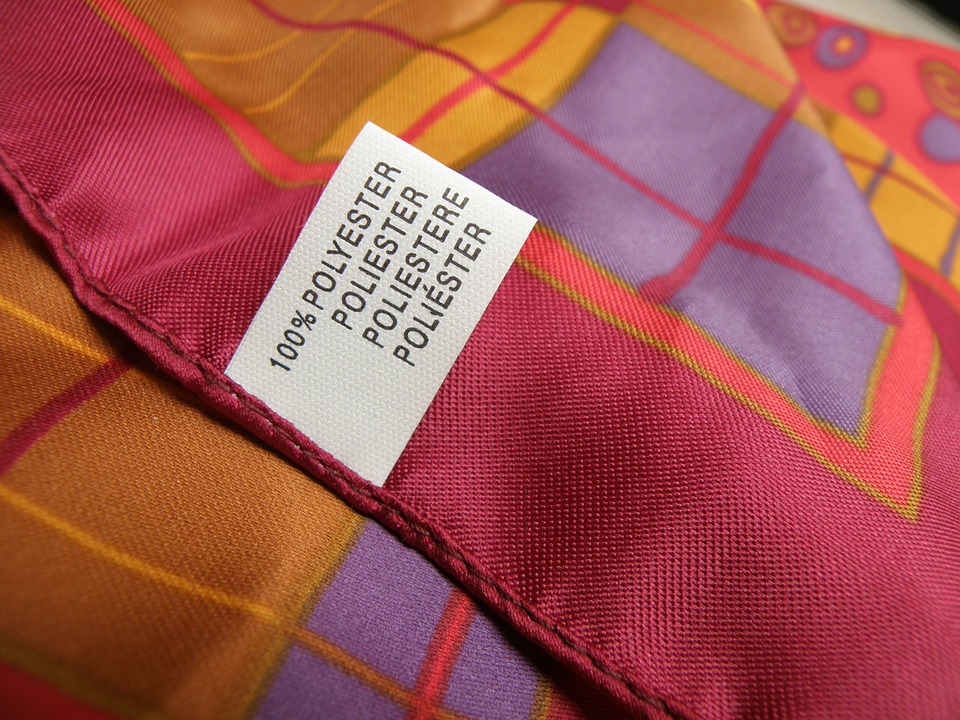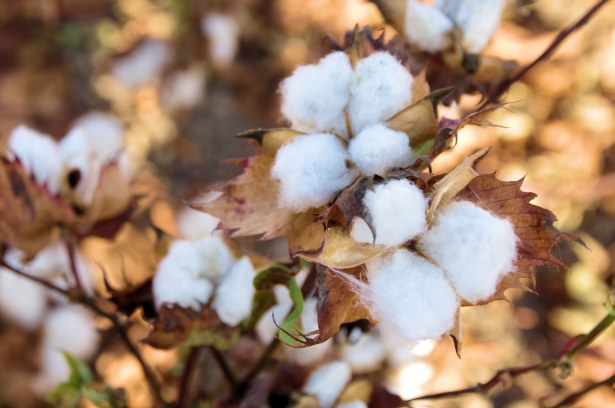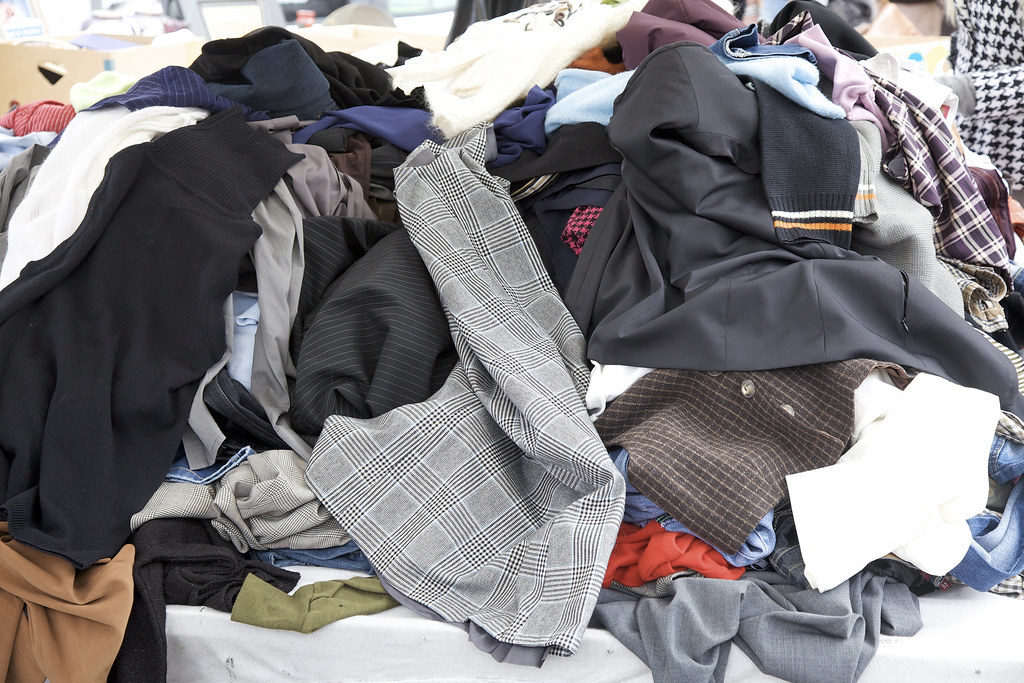No Fast Fashion at the Old Byre

There’s a lot in the media about fast fashion at the moment and the importance of mindful and sustainable shopping. To help our customers shop with confidence we’ve decided to do a series of blogs on sustainable fashion and the brands and products we stock. In our first blog post of the series we want to talk about fast fashion and why its unsustainable.
What is ‘Fast Fashion’?
Fast fashion is defined as ‘inexpensive clothing produced rapidly by mass-market retailers in response to the latest trends’. In July The Guardian reported that 2.7 billion pounds would be spent this summer on upwards of 50 million outfits that will only be worn once. This includes ‘throw away’ holiday clothing, outfits for weddings, and cut price bikinis. This is encouraged by low pricing, which leads people to see the items as disposable. It may even seem frugal to buy clothing cheaply but in truth there is a human and environmental cost.
The Environmental Cost
There is an environmental cost to producing every item of clothing and textile dying is the second largest polluter of clean water globally, after agriculture.
Cotton

Cotton production is water intensive and requires a high level of pesticides to prevent crops from failing. The water level required to grow the crops can be a significant problem in developing countries, especially those prone to drought. Most cotton grown is genetically modified to be resistant to the bollworm pest. This was intended to cut the number of pesticides required, however it lead to ‘superweeds’. Superweeds are resistant to common pesticides and require stronger and more harmful chemicals to control.
Polyester

Polyester is commonly used in fast fashion to keep costs down for production. However, when the finished garment is washed at home, microfibers are lost and washed away into the ocean. These microscopic fibres are to small to be caught by filtration systems, and do not biodegrade over time. This means they are building up in the ocean and causing issues for marine life. There is also an impact on human consumption, small sea creatures are ingesting the microfibers. These then move up the food chain till they are found in the seafood we consume. It are also microfibers being found in drinking water, both from a tap and bottled.
Discarding Quickly

Add to this the fact that 350,000 tonnes of clothing goes to landfill every year and the problem is clear. It is estimated that fast fashion is on average only worn 5 times before being discarded. This means that the environmental cost of producing the fabric, including the water used to create the fabric and dye it, then transport it to the UK, is not offset by the amount of time it is worn. The environmental cost is then ‘paid’ again for another item of clothing. Experts say we should wear every item we buy a minimum of 30 times but the longer we wear an item the better.
The Human Cost

The human cost of fast fashion has many different aspects. There is a huge issues with modern slavery and human trafficking, human rights violations in the work place and health and safety regulations.
Its estimated that 60-75 million people are employed in textiles, clothing and footwear globally. In many countries most workers don’t make even half as much as the living wage in their respective country. In fact globally 40.3 million people are held in Modern Slavery conditions, including some within the textile and clothing industry. According to an Oxfam report global supply chains are designed in a way that keeps workers trapped in poverty. Businesses should have a statement about modern slavery and the ways they are working to prevent it in their supply chain, including commitments to pay a fair wage.
Ensuring health and safety in the workplace is also often neglected in favour of cheap prices. In 2013 this came to the mainstream media when the Rana Plaza factory in Bangladesh collapsed killing 1334 workers. Some brands took notice and updated their policies to ensure safety for workers throughout their supply chain. Others have yet to act. So when looking at brands, be sure to see if they have a statement about how they are working to make their supply chain safer for everyone.
How You Can Help
By choosing clothes well, looking after them properly, and rehoming or recycling them when you can no longer use them you can reduce the impact your clothes are having. We also recommended the following top ten tips for buying in a sustainable way.
1 Define your style.
Know what you love wearing and find clothes you love. Too many clothes are sent to landfill unworn, or only worn once, because someone bought an item and then decided it wasn’t for them. If you know your style and buy clothes you really love your more likely to wear them for longer.
2 Follow long term trends.
If you buy something because its ‘the in thing’ but you aren’t quite sure about it, you probably won’t wear it, or will get rid of it fairly quickly. Following celebrity trend is a big part of this problem, with more people choosing clothes because celebrities and influences are wearing something trends are moving faster than ever. Its better to follow longer term patterns and add to your wardrobe when you find something you love, instead of as trends come and go.
3 Invest in quality pieces
High quality products are more likely to wear well and be worn for longer. A high quality wool jumper will last far longer then a cheaper acrylic version. This means you can wear the item for longer, reducing the amount that need producing or end up in landfill.
Choosing hard wearing products is particularly important when buying something with man made fibres like waterproof coats. With the environmental impact of such man made products you should aim to wear them for as long as possible.
4 Choose natural products
Products made of organic cotton, bamboo and wool make less of an environmental impact than polyester and cotton farmed with chemicals. Its better for the environment and its better for you. With less chemicals against your skin there is a reduce risk of allergies. Check the fibre content of products before you buy them.
5 If you cant choose natural choose recycled (or recyclable)
When natural products aren’t an option, like with waterproof coats, choose products that are made of recycled materials or that can be recycled. This again lowers the environmental impact, and reduces the amount of man made fibres ending up in landfill or the sea.
6 Look after your clothes
Most labels give clear instructions on washing and caring for your clothes, following these instructions can help clothes last longer. Not washing clothes too often can also help, think about whether something actually needs washing before putting it in the basket. Drying them on a line doesn’t just save on electricity its also better for your clothes!
With natural fibres such as wool items can pill however this can be easily be solved with a pilling comb. High quality wool and cashmere products are most likely to only pill once as the fibres settle and then last years.
7 Wear each item a minimum of 30 times.
Experts suggest that we should wear each item we buy at least 30 times. This helps to offset the carbon emissions from its production, and results in less clothes being made. So when purchasing a new item ask yourself are you going to wear it at least 30 times.
8 when you do need to get rid of things, do it with care.
We do inevitably end up with things we need to get rid of. When this happens try to do it with as much care as possible. Pass on old baby items to a new mum. Offer your sister the jumper she loves but you never seem to wear. If you don’t know someone who could benefit from the items then pass them on to a charity shop. When clothes are passed being worn either up cycle them, such as using an old t-shirt as a cleaning cloth, or drop them off at the nearest textile and clothes recycling point.
9 Choose to buy from from brands who mirror your values and ethos.
Do a little research into what your buying, find out where it was made, who by and how it got to your local shop. Its not necessarily a bad thing to manufacture abroad as this can help job creation in developing countries but it should be done right. Brands should be transparent about where they manufacture the products, have a statement about there work against modern slavery and ensuring workers rights abroad.
If possible find out how the goods come to the UK, its far better for the environment if products are shipped rather than flown. most companies will occasionally fly products due to unforeseen circumstances or natural disasters, however they should not routinely scheduled products to be transported by air.
Where you can shop with local brands, there are many amazing brands who manufacture in the UK and especially Scotland. Where you can buy locally produced products.
Brands should also be looking at how they are affecting the environment. They will ideally have a sustainability statement and a commitment to using organic and natural fibres in there products. Alternatively they may choose to recycle plastics into products or carbon offset there manufacturing process.
Find brands who mirror your values and are working towards environmental sustainability and workers rights across the world. If you find your favourite brand falls short of your ethos try sending them an email. Nicely let them know you would continue to shop with them if they made changes to their supply chain. One email might not help but if everyone spoke up, and voted with their money, more brands would be forced to pay attention to survive.
10 Shop local
Our final point is close to our hearts, as an independent small business. Shop with local businesses. We support slow fashion and all the campaigns for people to think more about the impact of their clothing. We’ve done a lot of research into the brands we stock to provide great quality, sustainable clothes. We are always happy to answer our customers questions and share information on brands and products. We’ve already shared information on the benefits of Bamboo and are committed to sharing more about our ethos and values. So vote with your money. By spending locally you support your local economy, we cant survive with out you!
